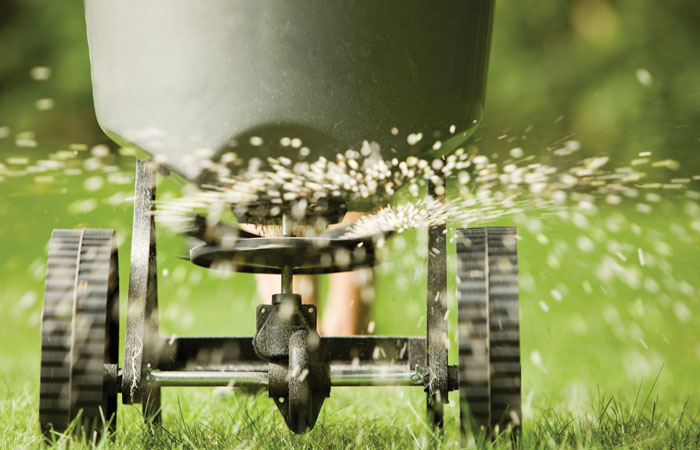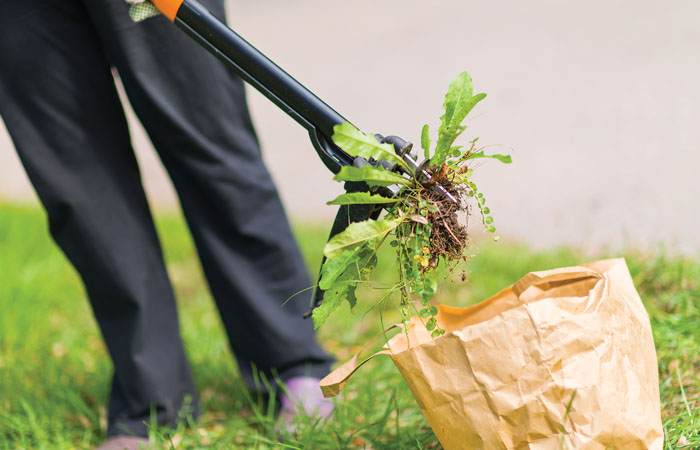There are a few things that are certain, and one of them is when it’s summertime in Texas, it will be HOT! July historically has brought us days with record heat and humidity, but when you are an avid golfer, professional greenkeeper or DIY landscaper, you still get out and enjoy the day. However, you should be aware of the risks that outdoor activities in high temperatures bring. July is National Heat Stroke Prevention Month, so this month’s Ask the Superintendent question is, “how do I safely enjoy playing and working outside when it’s hot?”
Sunscreen is Necessary
Summer golf is great! The turf conditions are good, the days are long, and many golfers are trying to play 36 or more holes a day. There are also more maintenance tasks to do, as well, both on the course and at home, so we all end up being active, outside and exposed to the hot weather. What exactly are the risks from heat or sun exposure? Let’s start with the most obvious: sun exposure.

I have been a golfer and professional greenskeeper for 36 years, and I keep my annual dermatologist appointment because the greater your exposure to the sun, the greater the risk of skin cancer. That doesn’t mean we are doomed to stay indoors, away from the sun, but it does mean we need to take some positive actions to play the game we love or keep up the maintenance of our green space.
No matter the forecast, sunscreen is the one step you should never skip before heading outdoors for the day, especially in the summer. Sun Protection Factor, or SPF, is the most common rating for sunscreens and they generally range from 30 to 100 SPF. SPF 30 blocks nearly 97 percent of UVB radiation, SPF 50 blocks about 98 percent and SPF 100 blocks about 99 percent, respectively. Remember to apply and reapply sunscreens as needed and be aware that sunscreens can expire, so check the date on the sunscreen that has been in your golf bag for a while. Also note that these expiration dates are only accurate if the product was stored in a cool, dry place (car trunks or back seats are generally hot).
Another good sunscreen tip is to look for broad spectrum protection on the label. This ensures your SPF protects against both harmful UVA and UVB rays. (UVA rays prematurely age skin and UVB rays burn; both can cause skin cancer). Experts recommend choosing SPF 50 or higher. Ask your dermatologist what they would recommend when you have your next checkup.
Wear the Right Clothes
For our purposes today, we are going to focus on the function of summer clothes, not necessarily fashion. These tips apply whether you are working or playing in the heat. It is important to wear light, loose-fitting clothes that are breathable, allowing sweat to evaporate from the skin as activity and temperatures increase. The evaporation of sweat will decrease the body’s temperature. Note that the upper body sweats more than the lower half, so wearing clothing that is loose-fitting and allows for more air circulation from the waist up is a good way to transfer heat away from the body.
We lose 50 percent of our body heat from our scalp and our face. Hats used for sun protection should be designed to allow for good ventilation of the body’s heat from the head. It is also a good idea to wear wide-brimmed hats for more sun protection for the ears and neck.
Generally, opt for lightweight, light-colored and loose-fitting clothing. Flowing garments allow air circulation and light-colored fabrics reflect light and heat. This will keep you cooler. Natural fiber fabrics – cotton, linen and silk – work best in absorbing sweat and allow the skin to breathe. Modern synthetics can also be effective, but our recommendation is to try a few fabrics and styles and go with what works best for you, You should test them in moderate temperatures, working up to heavier activities in higher temperatures
Heat-Related Emergencies
Heat Exhaustion verses Heat Stroke
It is important to know the difference between heat exhaustion and heat stroke and to know what to do to help someone who is experiencing a heat-related illness. Heat exhaustion happens when your body gets too hot. If you don’t treat heat exhaustion, it can lead to heat stroke. This occurs when your internal temperature reaches at least 104°F.
Heatstroke is much more serious than heat exhaustion. It can cause shock, organ failure or brain damage. In extreme cases, heatstroke can kill you, so it’s important to be aware of the signs of heat stress and take the appropriate actions as soon as possible.
Symptoms of heat exhaustion are muscle cramps, heavy sweating, pale or cold skin, weakness and/or confusion, dizziness, headache, nausea or vomiting, fast heartbeat, dark-colored urine (which indicates dehydration), In addition to these symptoms, warning signs of heatstroke also include fever of 104°F or higher, flushed, or red skin, lack of sweating, trouble breathing, fainting and seizures.

You can help yourself or others experiencing a heat emergency by doing the following:
To treat heat exhaustion, you should:
Move to a cooler area, out of direct sunlight.
Loosen clothing.
Apply cool, wet towels to your face, neck, chest and limbs.
Have someone fan your skin.
Drink cool water or sports drinks every 15 minutes.
Don’t drink too quickly.
Heatstroke is a life-threatening emergency. Call 911 or go to an emergency room immediately. In the meantime:
Move the person to a cooler area, out of direct sunlight.
Loosen clothing.
Remove any sweaty clothing.
Apply cool, wet towels to the face, neck, chest and limbs.
Apply ice, if you have it, to the underarms, wrists and groin.
Fan the person’s skin.
Offer cool water or sports drinks every 15 minutes if the person is conscious.
Children and adults over 65, anyone that is overweight or consuming alcohol are all at greater risk of having a heat-related emergency.
Stay Hydrated
The good news is heat-related illness and injury are fully preventable. The key to avoid missing practice, games, fun and outdoor projects is to get enough water. You should drink enough water to have to urinate before your activity starts and then drink 4-6 ounces every 15-20 minutes during times when you are actively sweating. At the end of the activity, you should have to urinate again, and the color of the urine should be clear to light yellow, both before and after the workout. If you are unable to urinate or the urine is dark colored after a workout, you didn’t drink enough water.
Dehydration affects not only your skill potential, but it also risks your health, especially when the temperatures are high, over 90 degrees. Water is always the best option to stay hydrated but drinks with added electrolytes are safe to consider for extended workouts. Sweat causes fluid loss as well as the loss of electrolytes, such as sodium. This can result in headaches, stomachaches and muscle cramps. Starting with water and switching to an electrolyte drink halfway through (18 or 36 holes) is something to consider. Avoid energy drinks; the caffeine can make you more dehydrated.
Golf and outdoor activities are a huge part of a memorable summer, but the sun and heat can be dangerous without the proper precautions. I hope that you found these tips useful and will play lots of golf … and join me in mowing a little grass and keeping your home lawn and garden in top shape. Stay safe, cool, and keep reading AVIDGOLFER magazine.